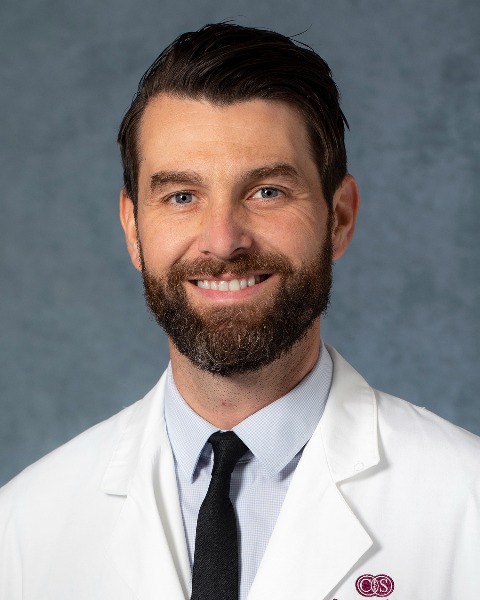Back
Purpose: National guidelines recommend adjuvant systemic therapy after anatomic lung resection for patients found to have hilar nodal disease. In this study we investigated the national trends in guideline directed therapy as well as the outcomes in elderly patients with pathologic N1 nodal disease at resection.
Methods: The National Cancer Database was queried for patients aged 80 or greater undergoing anatomic pulmonary resection with a finding of pathologic-N1 disease (IIB [T1abc-T2abN1] and IIIA [T3-T4 N1]) from 2010-2017. National Comprehensive Cancer Network (NCCN) guideline concordance was evaluated. Patients were excluded if they had received induction treatment prior to surgery or if they had positive surgical margins. Outcomes of patients who underwent adjuvant chemotherapy for N1 disease (AT) were compared to those who did not (SO). Propensity score matching for age, gender, race, Charlson-Deyo score, year of diagnosis and 30-day mortality was used to analyze the 5-year overall survival benefit. Adjusted Kaplan-Meier survival analysis was performed.
Results: A total of 1321 patients met inclusion criteria, with 992 SO and 329 SA patients. Guideline concordance for the delivery of adjuvant therapy was seen in 24.9%. Annual guideline concordance generally increased by year and peaked in 2016 at 43.8%. Patients who received adjuvant therapy for N1 disease were older (82.8 years vs 81.7; p < 0.001). Patients who did not receive adjuvant therapy were more likely to have undergone an open operation (63.4% [SO] vs 56.2% [SA], p=0.022) and had a longer mean hospital stay (7.33 days [SO] vs 5.64 [SA]). In the propensity matched group, adjuvant therapy showed a 5-year survival benefit when compared to no adjuvant therapy in the matched groups (46.9% [SO] vs 55.6% [SA], p = 0.041).
Conclusion: Delivery of guideline-directed adjuvant therapy for hilar nodal disease in non-small cell lung cancer appears to be increasing, however currently less than half of elderly patients receive it. Those who do receive therapy appear to have an overall 5-year survival benefit.
Identify the source of the funding for this research project: none
General Thoracic
Category: Scientific Abstract: Oral/Poster
Guideline Concordance and Outcomes for Elderly Patients with Non-Small Cell Lung Cancer Found to have Hilar Nodal Disease at Resection

Andrew R. Brownlee, MD
Thoracic Surgeon
Cedars -Sinai Medical Center
Los Angeles, California, United States
Presenting Author(s)
Disclosure(s):
Andrew R. Brownlee, MD: No financial relationships to disclose
Purpose: National guidelines recommend adjuvant systemic therapy after anatomic lung resection for patients found to have hilar nodal disease. In this study we investigated the national trends in guideline directed therapy as well as the outcomes in elderly patients with pathologic N1 nodal disease at resection.
Methods: The National Cancer Database was queried for patients aged 80 or greater undergoing anatomic pulmonary resection with a finding of pathologic-N1 disease (IIB [T1abc-T2abN1] and IIIA [T3-T4 N1]) from 2010-2017. National Comprehensive Cancer Network (NCCN) guideline concordance was evaluated. Patients were excluded if they had received induction treatment prior to surgery or if they had positive surgical margins. Outcomes of patients who underwent adjuvant chemotherapy for N1 disease (AT) were compared to those who did not (SO). Propensity score matching for age, gender, race, Charlson-Deyo score, year of diagnosis and 30-day mortality was used to analyze the 5-year overall survival benefit. Adjusted Kaplan-Meier survival analysis was performed.
Results: A total of 1321 patients met inclusion criteria, with 992 SO and 329 SA patients. Guideline concordance for the delivery of adjuvant therapy was seen in 24.9%. Annual guideline concordance generally increased by year and peaked in 2016 at 43.8%. Patients who received adjuvant therapy for N1 disease were older (82.8 years vs 81.7; p < 0.001). Patients who did not receive adjuvant therapy were more likely to have undergone an open operation (63.4% [SO] vs 56.2% [SA], p=0.022) and had a longer mean hospital stay (7.33 days [SO] vs 5.64 [SA]). In the propensity matched group, adjuvant therapy showed a 5-year survival benefit when compared to no adjuvant therapy in the matched groups (46.9% [SO] vs 55.6% [SA], p = 0.041).
Conclusion: Delivery of guideline-directed adjuvant therapy for hilar nodal disease in non-small cell lung cancer appears to be increasing, however currently less than half of elderly patients receive it. Those who do receive therapy appear to have an overall 5-year survival benefit.
Identify the source of the funding for this research project: none
